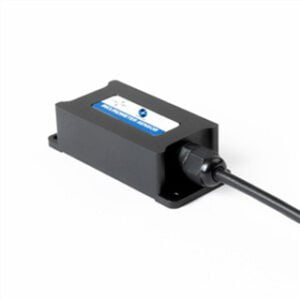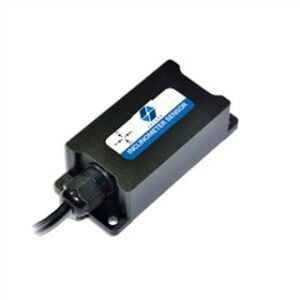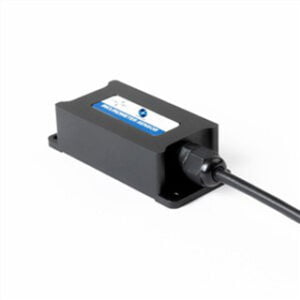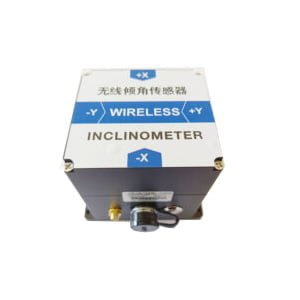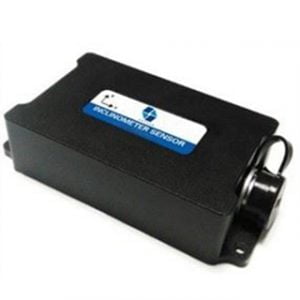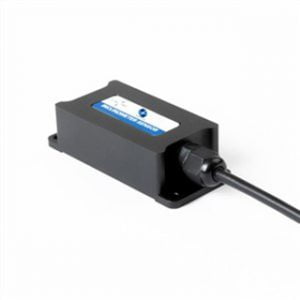Tilt sensors measure bridge deflection is applicable to the deflection test of any bridge span length at any position, and belongs to the field of bridge detection technology, in particular, it relates to a high-precision and high-efficiency bridge deflection test method in the process of bridge detection.
Background technique
In bridge testing, it is necessary to measure the deflection of the bridge, and the accuracy of the deflection measurement data is directly related to the assessment of the bridge state. Meanwhile, the timeliness of the bridge testing is required. Therefore, in the process of bridge inspection, the high precision and high efficiency bridge deflection testing system is very important. In the prior art, the field test of bridge deflection generally adopts the following methods: 1.Optical measuring instruments such as level are used to measure bridge deflection. Although the operation is simple, the measurement accuracy is low, and the measurement results are greatly affected by human influence and interference, which cannot be applied to the test of bridge dynamic deflection and the error is large. 2.The use of dial meters, dial meters and other displacement meters to test the bridge deflection, the scaffolding needs to be set up below the beam body, so as to install the deflection test instrument on the scaffold, but in the scaffolding under the bridge, there is a complex process, time-consuming and laborious, and higher scaffolding has a greater safety risk, its own shaking and uneven settlement at the bottom will affect the test results of bridge deflection. 3.The use of photoelectric image principle, through the acquisition of image signals, the use of data processing method, to obtain the deflection value of the bridge, its working principle is complex, image data acquisition is limited by weather, light and other specific conditions, data processing is complex, and the cost is high, the accuracy is low, the actual operability is poor. 4.Based on the principle of connecting pipe, the deflection of bridge is directly measured according to the change of liquid level in the open connecting pipe. This method is simple in principle, but due to the viscous resistance between liquid and pipe wall and the capillary action between water and pipe wall, the test accuracy is not high, and it cannot be applied to the test of dynamic deflection of bridge.
Therefore, the existing bridge deflection testing device has the following defects: 1.Low test accuracy and large error; 2.The test device installation is complicated, the data collection is more complicated, the labor cost is high, the work efficiency is low; 3.It cannot be applied to the detection of dynamic deflection of Bridges and the deflection of bridges across large rivers and grand canyon.
How do inclinometer measure bridge deflection?
Tilt sensor measurement of bridge deflection is a bridge deflection test method based on dip angle, which converts the dip angle change of bridge section into the change of bridge deflection. In other words, the inclinometers is arranged in 5 sections of the bridge to measure the angle of section. The (electrical) signal of the change of dip angle is timely transmitted to the acquisition system through signal cables, and the mathematical relationship formula between bridge deflection and dip angle is calculated by using the dip angle value of section. And then calculate the deflection at any one position.
For example, if we want to measure the deflection of a bridge at any position, we place an ER-TS-4258CU current type biaxial tilt sensor at this position of the bridge, so that the tilt sensor of the 5 sections can be measured, and the signal of the inclinometer change is transmitted to the data acquisition system in real time through the current. We can use the dip value measured by the tilt sensor of the section arrangement to calculate the mathematical relationship between the deflection and the dip angle of the bridge, and then calculate the deflection that needs to be measured at the bridge position.
The disturbance is, in layman's terms, the amount of deformation. The disturbance of the steel structure such as the cantilever beam should meet the corresponding specifications. The deformation should not be too large, and the formula of the material mechanics can be used for calculation. The deflection of the bridge has a corresponding relationship with the corner angle of the section. The deflection of the bridge can be measured by a double-axis inclination sensor mounted on the bridge. The method uses the structural finite element model to calculate the deflection curve of the unit load acting at different positions. The deflection curve is used as the reference displacement mode, and the true deflection is the linear combination of the reference displacement modes. The combination coefficient is determined by using the minimum inclination test data. The method of two-square fitting effectively reduces the influence of test errors.
Summary: The tilt sensor measure bridge deflection is easy to operate and the test data are accurate, the measurement efficiency is high, and the performance is stable and reliable, and it is not affected by the change of bridge structure form and bridge section. It can solve the problems such as the difficulty of deflection testing and the poor accuracy of measurement data of bridges spanning large rivers and grand canyon.
More Technical Questions
1.The Difference between Tilt Sensor and Gyro Sensor
3.How to Use the Tilt Sensor and How to Install It?
4.What are Tilt Switches and Tilt Sensors?
5.Do you Know the Working Principle of Inclinometer ?
6.What can a Tilt Sensor be Used for?
Products in Article
